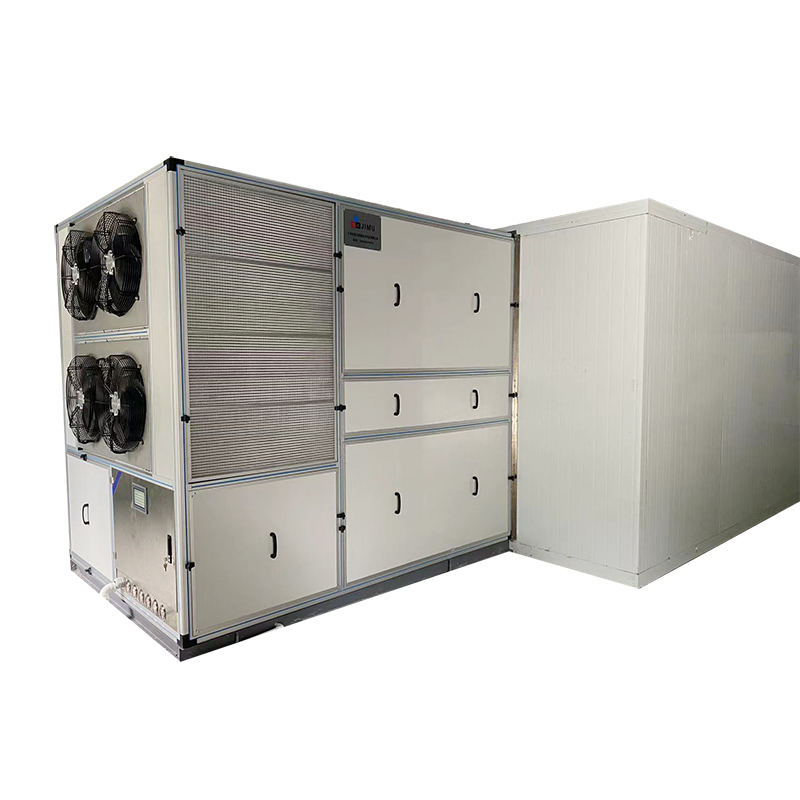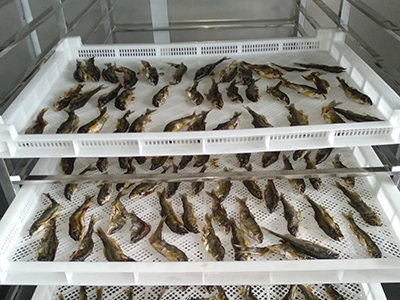
Have you ever tried making your own dried fish at home? Not only is it a great way to preserve your catch or store-bought fish, but it also results in a delicious and nutritious snack or ingredient for various dishes. In this guide, we'll walk you through the process of making dried fish using a fish drying machine. Let's dive in!
Preparing the Fish
Before you start using your fish drying machine, it's essential to properly prepare the fish for drying. Here are the steps:
1.Choose the Right Fish for Drying
When selecting fish for drying, opt for varieties that have firm flesh and low oil content. Some popular choices include cod, salmon, tilapia, and trout. Ensure the fish is fresh and free of any off-putting odors.
2.Clean and Gut the Fish
Thoroughly clean the fish, removing scales, innards, and any blood. Rinse the fish under cold water to remove any debris. Pat the fish dry with paper towels to ensure there is no excess moisture.
3.Slice the Fish for Drying
Depending on the size of your fish drying machine trays, slice the fish into uniform pieces of about ½ inch thickness. This will help ensure even drying and prevent some pieces from over-drying while others remain moist.

Using the Fish Drying Machine
Now that your fish is prepared, it's time to set up the fish drying machine. Follow these steps:
1.Set up the Machine According to the Manufacturer's Instructions
Each fish drying machine may have slightly different settings, so refer to the user manual for specific instructions. Typically, you'll need to assemble the trays, plug in the machine, and set the temperature and time settings.
2.Arrange the Sliced Fish on the Drying Trays
Evenly distribute the sliced fish pieces on the drying trays, making sure there is space between each piece for adequate airflow. Avoid overcrowding the trays, as this can hinder the drying process.
3.Set the Temperature and Drying Time
Based on the type of fish and your machine's specifications, set the temperature and drying time. Generally, fish should be dried at a low temperature (between 120-150°F) for several hours to ensure thorough drying without cooking the fish.
Monitoring the Drying Process
It's crucial to keep an eye on the drying process to ensure your fish is drying correctly. Here are some tips:
1.Check the Fish Periodically for Dryness
Throughout the drying process, check the fish regularly to see how dry it is. The fish should be leathery and slightly pliable but not moist or sticky. You can test by bending a piece – it should crack but not break completely.

2.Rotate the Trays for Even Drying
To promote even drying, rotate the trays in the fish drying machine periodically. Move trays from the top to the bottom and vice versa, as heat distribution may vary within the machine.
3.Adjust the Temperature or Drying Time if Needed
If you notice some pieces are drying faster than others, consider adjusting the temperature or drying time accordingly. It's better to err on the side of caution and dry the fish a bit longer to ensure it is completely dried.
Storing the Dried Fish
Once your fish is dried to perfection, it's time to store it correctly to maintain its quality. Follow these steps:
1.Allow the Fish to Cool Completely
After removing the dried fish from the machine, let it cool completely at room temperature. This helps prevent condensation from forming in the storage containers.
2.Package the Dried Fish in Airtight Containers or Bags
Transfer the dried fish to airtight containers or resealable bags to protect it from moisture and air. Proper packaging will help extend the shelf life of your dried fish.
3.Store in a Cool, Dry Place for Long-Term Storage
Place the packaged dried fish in a cool, dry area away from direct sunlight and heat sources. Proper storage conditions can help your homemade dried fish last for several months to a year.

Enjoying your Homemade Dried Fish
Now that you've mastered the art of making dried fish with a fish drying machine, it's time to enjoy the fruits of your labor. Here are some tips on how to savor your homemade dried fish:
1.Rehydrate the Dried Fish Before Cooking
Before using your dried fish in recipes, consider rehydrating it by soaking the pieces in water, broth, or marinade for about 15-30 minutes. This will bring back some moisture and softness to the fish.
2.Use in Your Favorite Recipes or as a Snack
Get creative with how you use your dried fish! You can add it to soups, stews, pasta dishes, salads, or enjoy it as a protein-packed snack on its own.
3.Share with Friends and Family
Spread the joy of homemade dried fish by sharing your creations with loved ones. They'll be impressed by your culinary skills and may even ask you for tips on making their own dried fish!
Conclusion
Making dried fish with a fish drying machine is a rewarding process that results in a tasty and versatile ingredient. By following the steps outlined in this guide, you can create your own batches of dried fish to use in various dishes or enjoy as a snack. Give it a try and elevate your culinary game with homemade dried fish!













